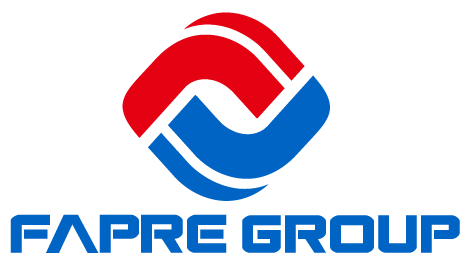NEWS CENTER
EPDM rubber, or Ethylene Propylene Diene Monomer rubber, is a versatile and durable synthetic rubber widely used in various industries. Known for its exceptional resistance to weathering, heat, and chemicals, EPDM rubber is a popular choice for applications ranging from automotive to roofing. This guide will explore the key properties, benefits, and applications of EPDM rubber, providing a thorough understanding of why it is a preferred material in many fields.
What Is EPDM Rubber?
EPDM rubber is a type of synthetic elastomer made from ethylene, propylene, and a diene component that provides cross-linking. The combination of these monomers results in a rubber with unique properties, including excellent resistance to ozone, UV rays, aging, and extreme temperatures. EPDM rubber is available in various forms, such as sheets, rolls, and molded products, making it adaptable to different uses.
Key Benefits of EPDM Rubber
1. Weather Resistance
One of the most notable properties of EPDM rubber is its outstanding resistance to weathering. It can withstand prolonged exposure to UV rays, ozone, and harsh weather conditions without deteriorating. This makes EPDM rubber an ideal choice for outdoor applications, such as roofing membranes, seals, and gaskets.
2. Temperature Tolerance
EPDM rubber maintains its flexibility and performance over a wide temperature range. It remains stable and functional in temperatures as low as -40°C (-40°F) and as high as 150°C (302°F). This temperature tolerance makes it suitable for applications in both cold and hot environments, such as HVAC systems and automotive components.
3. Chemical Resistance
EPDM rubber exhibits excellent resistance to a wide range of chemicals, including acids, alkalis, and water-based solutions. This chemical inertness makes it suitable for use in industrial settings where exposure to harsh chemicals is common. It is also resistant to polar solvents, such as ketones and alcohols.
4. Elasticity and Flexibility
EPDM rubber is known for its high elasticity and flexibility, which allows it to absorb shocks and vibrations effectively. This property is crucial for applications that require a tight seal or cushioning, such as in automotive weatherstripping and vibration dampening components.
5. Longevity and Durability
Due to its resistance to aging, weathering, and chemical exposure, EPDM rubber offers exceptional longevity and durability. Products made from EPDM rubber can last for many years without significant degradation, providing a cost-effective solution for various applications.
Common Applications of EPDM Rubber
1. Automotive Industry
In the automotive sector, EPDM rubber is widely used for weatherstripping, seals, hoses, and belts. Its ability to resist heat, ozone, and weathering makes it ideal for components exposed to harsh environmental conditions. EPDM rubber ensures a tight seal around windows and doors, preventing water and air leaks.
2. Roofing and Waterproofing
EPDM rubber is a popular choice for roofing membranes and waterproofing solutions. Its weather resistance and flexibility make it suitable for flat and low-slope roofs. EPDM roofing membranes provide long-lasting protection against leaks and water damage, even in extreme weather conditions.
3. HVAC Systems
In heating, ventilation, and air conditioning (HVAC) systems, EPDM rubber is used for gaskets, seals, and insulation. Its ability to withstand temperature fluctuations and resist chemical exposure ensures reliable performance and longevity in HVAC applications.
4. Industrial Applications
EPDM rubber is employed in various industrial applications, including conveyor belts, seals, and gaskets. Its resistance to chemicals and weathering makes it suitable for use in harsh industrial environments. EPDM rubber provides reliable sealing and cushioning in machinery and equipment.
5. Electrical Insulation
Due to its excellent electrical insulating properties, EPDM rubber is used in electrical and electronic applications. It serves as an insulating material for cables, wires, and other electrical components, ensuring safety and preventing electrical faults.
How to Choose the Right EPDM Rubber
When selecting EPDM rubber for a specific application, consider the following factors:
1. Grade and Formulation
EPDM rubber is available in different grades and formulations, tailored to specific applications. Ensure that you choose the right grade that meets the required specifications for your application, such as resistance to chemicals, temperature, or weathering.
2. Thickness and Hardness
The thickness and hardness of EPDM rubber affect its performance and suitability for different uses. Thicker sheets provide better cushioning and insulation, while thinner sheets offer more flexibility. The hardness, measured in durometer, determines the material's resistance to deformation and wear.
3. Color and Finish
EPDM rubber is available in various colors and finishes. Black is the most common color due to its resistance to UV rays and weathering. However, other colors are available for specific applications where aesthetics or color coding is important.
4. Compatibility with Other Materials
Ensure that EPDM rubber is compatible with other materials used in your application. This includes checking for chemical compatibility and ensuring that the rubber does not cause corrosion or degradation of adjacent materials.
Installation and Maintenance Tips
1. Installation
- Preparation: Ensure the surface where EPDM rubber will be applied is clean, dry, and free from contaminants.
- Adhesion: Use appropriate adhesives or fasteners to secure the EPDM rubber in place. Follow the manufacturer's guidelines for the best results.
- Sealing: For applications requiring waterproofing, ensure that all seams and joints are properly sealed to prevent leaks.
2. Maintenance
- Cleaning: Regularly clean EPDM rubber surfaces with mild soap and water to remove dirt and debris. Avoid using harsh chemicals that could damage the material.
- Inspection: Periodically inspect EPDM rubber components for signs of wear, damage, or degradation. Replace any compromised sections promptly to maintain performance and safety.
Conclusion
EPDM rubber is a versatile and durable material, offering exceptional resistance to weathering, heat, and chemicals. Its wide range of applications, from automotive and roofing to industrial and electrical uses, showcases its adaptability and reliability. By understanding the properties, benefits, and considerations for choosing EPDM rubber, you can make informed decisions and optimize your projects with this remarkable material. Whether you're sealing a car door, waterproofing a roof, or insulating electrical components, EPDM rubber provides a dependable solution that stands the test of time.
